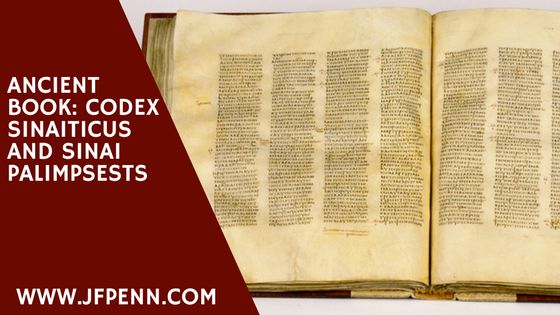One of the important clues in the next ARKANE book, Exodus, comes from a manuscript fragment found in the monastery of St Catherines in the Sinai, Egypt.
 No spoilers here, but Morgan Sierra must find a possible location for the Ark of the Covenant at the traditional place where Moses received the Ten Commandments.
No spoilers here, but Morgan Sierra must find a possible location for the Ark of the Covenant at the traditional place where Moses received the Ten Commandments.
St Catherine's has one of the most extensive collections of ancient manuscripts in the world, mainly due to the fact that the monastery was never sacked. It is remotely situated in the Sinai desert but was also granted a protection from the Prophet Mohammed so the monastery was safe during the expansion of Islam across North Africa. The dry climate also makes it perfect for manuscript preservation.
The Codex Sinaiticus
The entire Codex has now been digitized and you can read it online – with some translation available if your ancient Greek is rusty! I actually did a whole semester during my Theology degree at Oxford translating John's Gospel from ancient Greek so it is a particular thrill to me to be able to read the text itself. I have seen the actual book at the British Library, it's indeed a marvel and I just had to include it in Exodus.
Palimpsests

Palimpsests are pages or scrolls that have been used once, then scraped and used again, but with certain technologies, the original text underneath can be read and exposed. Because material for writing was rare and expensive, in ancient times, they often reused scrolls. One of the most famous is the Archimedes Palimpsest where a 10th century Byzantine prayerbook was written over the original mathematical text from Archimedes dated around 200 BC.
St Catherine's monastery is now working with a team to digitize the manuscripts that remain – this article in the Washington Post (Sept 2012) discusses the preservation project and also the 130 palimpsests, the texts written under other texts, that have been found on the site.
I find the idea of palimpsests to be fascinating, and even the word itself is evocative. What riches could be found under the many thousands of ancient documents in the Vatican archives? What will researchers find with new technologies? And how does a fragment of such a text impact the plot of Exodus?
Images: Top Codex from the British Library,


[…] well as ancient Egypt and the possible places the Ark could be, but I’ve also been studying palimpsests and the Codex Sinaiticus as well as Jordanian archaeology. I share a lot of this research on my […]